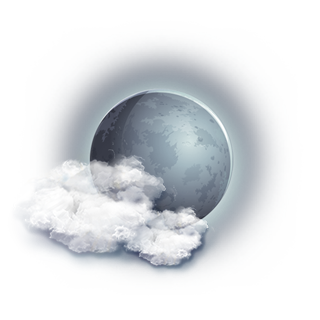BITMAP (Brandeis Initiative for Technology, Machines, Apps and Programming), Deis3D and the MakerLab have converted the month of March into MakeMonth, a full 31-day schedule of events which celebrate and promote innovation in the sciences at Brandeis and around the world. Tuesday, March 22 marked the event Code Poetry, an event cosponsored by BITMAP and the English Department where computer programming and poetry converged in a new, inventive manner. Students heard from both Computer Science professor Harry Mairson and English professor Elizabeth Bradfield on the ways that coding and poetry can intertwine and benefit one another. Following the two brief lectures, students were able to work together and put their new skills to the test with a writing workshop. In a rare and refreshing interdepartmental intersection, the audience of students represented Computer Science, English, Chemistry, Creative Writing, Physics and a multiplicity of other majors.
Professor Mairson of the Computer Science department began the event with a light and personal talk about his own experience in joining art and science, left brain and right brain. His tongue-in-cheek humor came out in his poetry, a hobby which began as a yearly tribute to his wife and to the poems recited at his wedding. From there, alternate forms emerged, such as a satirical ode to his new, custom-made bicycle.
Mairson promoted the notion that coding, like poetry and like many other practices, is a stylized form of writing. Computational thinking, to contrary belief, is not only instructing a machine to perform a function, but also serves as an instructive stylized form. Fundamental to writing any of these styles is an understanding of the idiomatic expressions used; you would not go to great lengths of humor in a grant proposal, nor would you write a cover letter in iambic pentameter. Code poetry, therefore, requires an understanding of both poetic form and computational thinking.
Concluding his mini-lecture, Professor Mairson went on to recite two of his own poems that toy with the “rules” of form. The first poem, titled “P and NP” after a famous unsolved problem in computer science, is one poem in a series, “New proofs of old theorems.” The second poem, unrelated to computer science, is titled “Poetic Justice,” an epitaph to Louis Brandeis in poetic form. His poetry is clear, cutting and full to the brim with wit. Both poems can be found on the “silly part” of Mairson’s website.
Professor Bradfield, a professor in the English Department and poet resident at Brandeis, gave a second small lecture on the convergence of computer programming and poetry. “In programming, A plus B equals B plus A. This is not true in poetry. If you get one thing wrong, the whole thing’s wrong,” Bradfield noted. Like Mairson, however, Bradfield sees significant overlap between the two and gave students a writing exercise in which common coding terms were incorporated into a love poem. Bradfield introduced several other ways in which coding and poetry can overlap; a poem can be created by manipulating coding from a database, by writing poetry that expresses the act of coding or even by using code to create a collaborative sample of poetry. Students watched a video of a poem on YouTube titled “The Christmas When You Were Nine” by BJ Best, an unconventional piece which intends to draw the viewer into the development of the poem. Bradfield also shared personal experiences of coding and writing poetry, both of which require an appreciation for tending to the details.
“The intense focus of trying to get code to work is just like the process of revising a poem,” said Bradfield.
Finally, students broke off to begin writing code poetry, forming groups with healthy combinations of computer scientists and writers. The room filled with eager chatter, students putting together their varying skill sets to test their newfound knowledge.
The event was co-run by two BITMAP leaders, secretary Halley Saul ’17 and treasurer Talie Massachi ‘18. Saul is an English and Anthropology double-major who sought to bring her interests in the humanities to BITMAP in some manner. Massachi, a Computer Science and Mathematics double-major, is an advocate for making computer programming and computer science more accessible to the student population at Brandeis and beyond. Massachi pushed for Saul’s goal with the idea of a “Code Poetry” event. This was possible with the help of Theresa Gaffney ’16, an English UDR and an editor-in-chief of The Brandeis Hoot.
“Today, they both matter. You need to be able to read, write and express yourself, and you need to have a basic understanding of computers,” said Saul.
Saul and Massachi estimate that roughly 70 percent of BITMAP consists of Computer Science majors or those who have experience programming. The remaining 30 percent come from various majors and from various backgrounds in computer science. BITMAP welcomes people of all backgrounds and levels of experience to come to events or meetings to learn more about technology. As advertised throughout MakeMonth, there is no experience required for any of the events; many of the workshops are devoted to teaching new skills and honing more developed skills. The Maker Lab strongly encourages newcomers and has access to an impressive amount of resources, including at least 40 3D printers. Completion of a training session grants students swipe access to the lab, an invaluable space for learning.
MakeMonth continues until March 31, featuring various events Monday through Thursday. In addition, BITMAP continues to meet each Thursday from 6:30 to 8 p.m. in the SSIS suite of the SCC.


